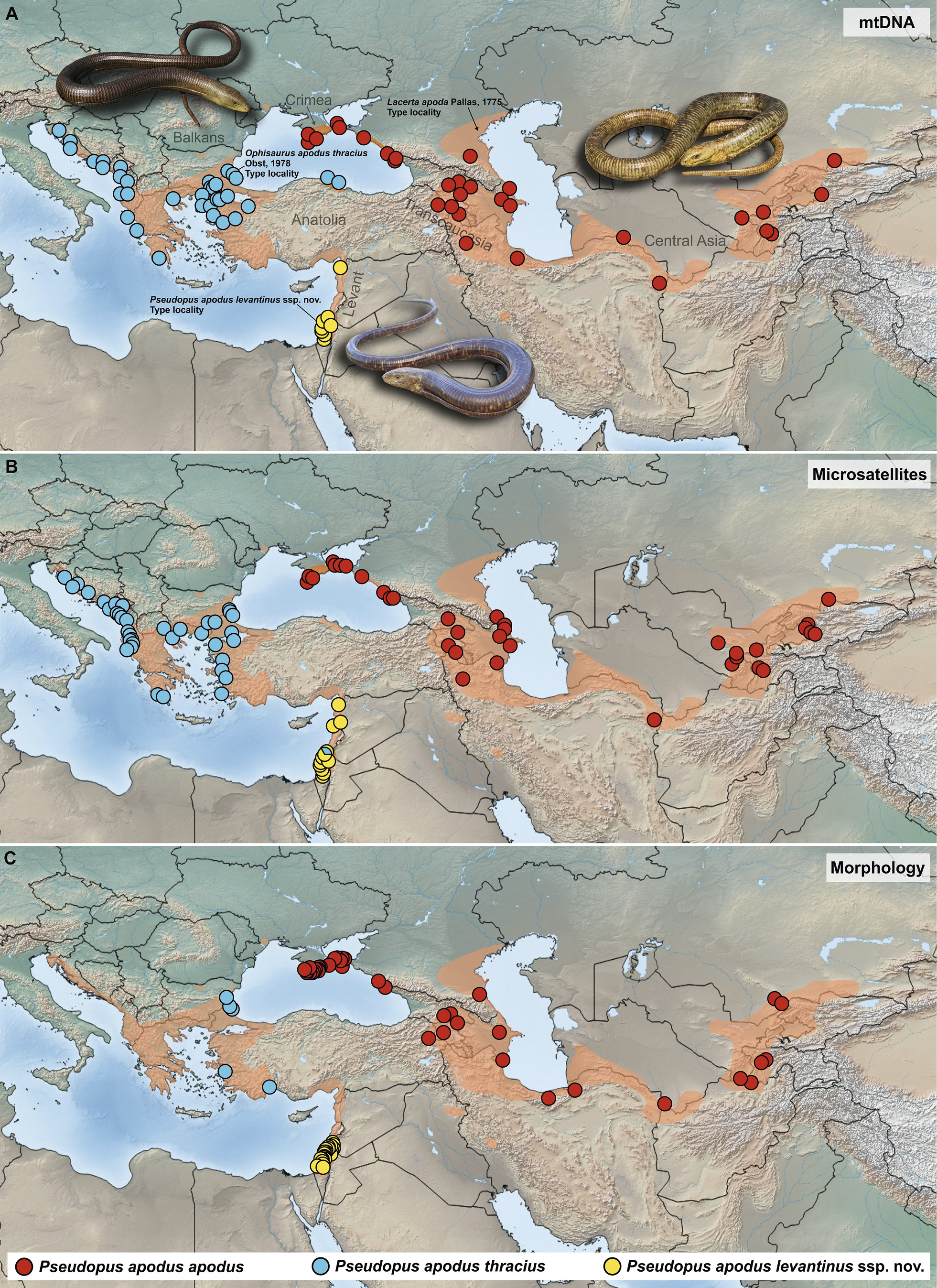
|
||
|
Geographic distribution of the samples and specimens used in the molecular-phylogenetic (A, B) and morphological analyses (C). Some specimens used in morphological analyses were from unknown localities, so those are not indicated in the map. Color scheme corresponds with the one used in Fig. 2 and follows Jandzik et al. (2018). For more details on samples, specimens, and localities, refer to Tables S1–3. The distribution range follows Sindaco and Jeremcenko (2008) and Jandzik et al. (2018). The pictured individuals represent currently recognized subspecies originating from (left to right) Lefkimi, Greece (P. a. thracius), Hirbat Tzura, Israel (P. a. levantinus ssp. nov.), and Tyolyok, Kyrgyzstan (P. a. apodus). Photos by Daniel Jablonski and David David. |